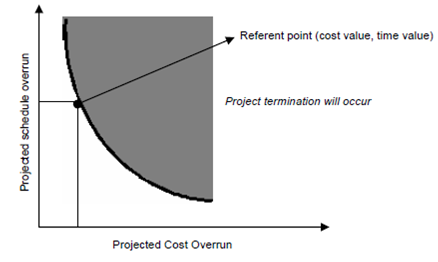Risk Assessment
On this point in the risk management process we have build a set of triplets of the form [ri,li,xi] Where ri, is risk, li is the probability of the risk and xi is the impact of the risk. During risk assessment we further examine the accuracy of the estimates which were made during risk projection, attempt to prioritize the risks which have been uncovered and starts thinking about ways to control and/ or avert risks which are likely to occur.
For assessment to be useful a risk referent level [CHA 89] must be describe. For most software projects the risk parts discussed earlier cost, performance, support and schedule also present risk referent stages. That is, there is a stage for performance degradation cost overrun support difficulty or schedule slippage or any combination of the 4 what will cause the project to be ended. If a combination of risks create problems that cause one or more of these referent levels to be exceeded work will stop. In the context of software risk analysis a risk referent stage has a single point that is called the referent point or break point at that point the decision to proceed with the project or terminate it problems are just too great are equally acceptable.
By representing this conditional graphically. If there is a combination of risks leads to problems which cause schedule and cost overruns there will be a level of represented through the curve in the figure which will cause project termination the shaded region). At a referent point the decisions to terminate or to proceed are equally weighted.
In reality the referent stages can rarely be represented as a single line on a graph. In the most of cases it is an rregion in which there are field of uncertainty example for attempting to predict a management decision which is based on the combination of referent values is often impossible.

Figure - Risk referent level